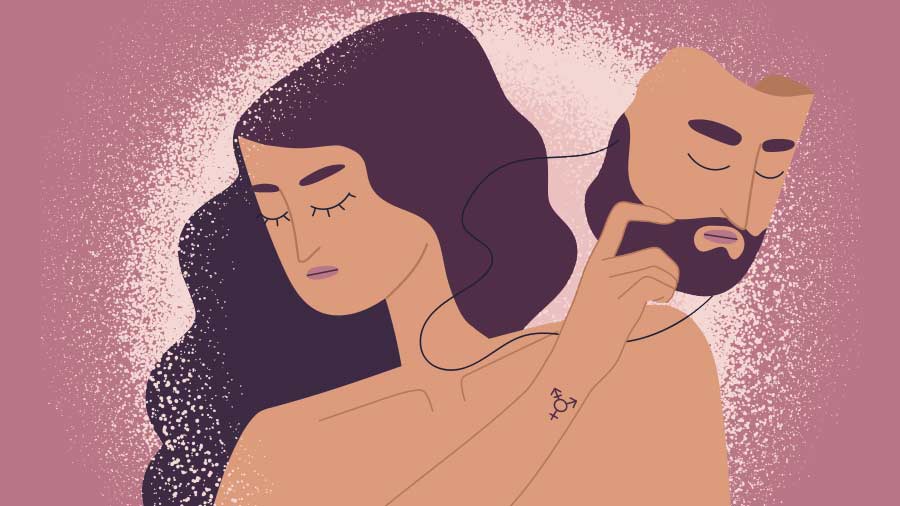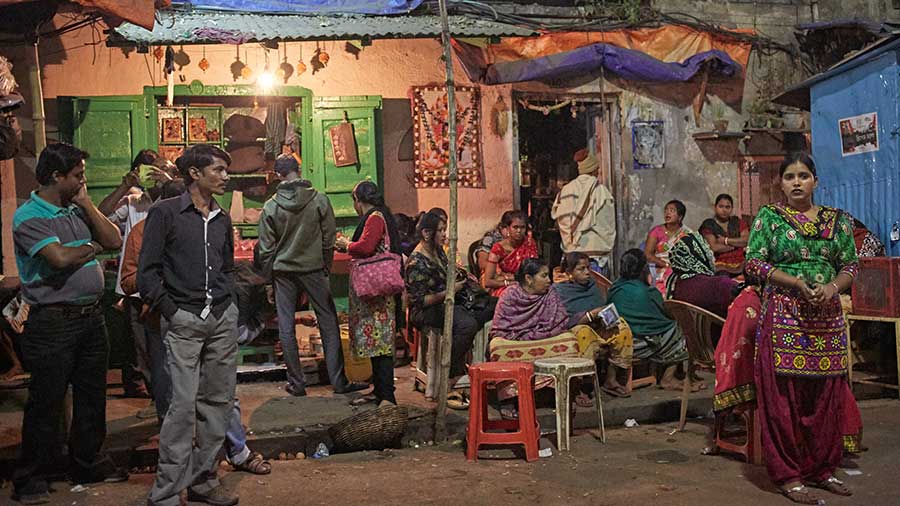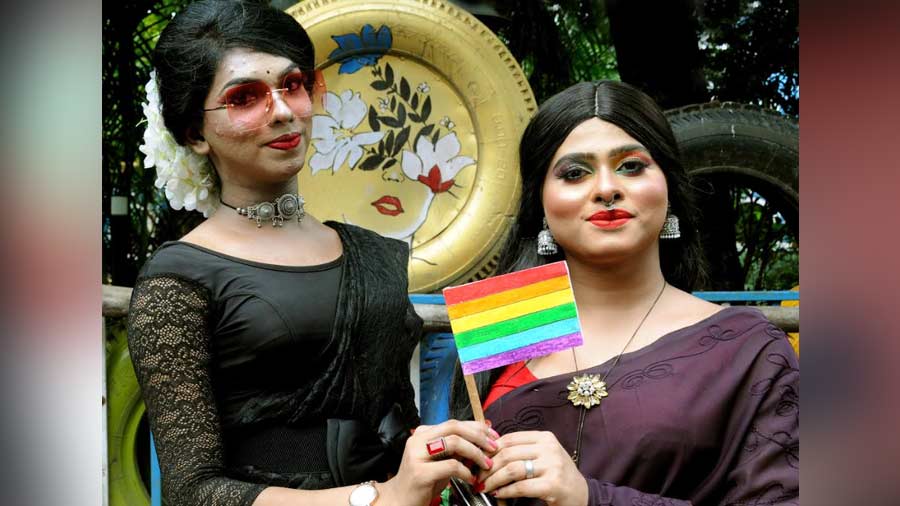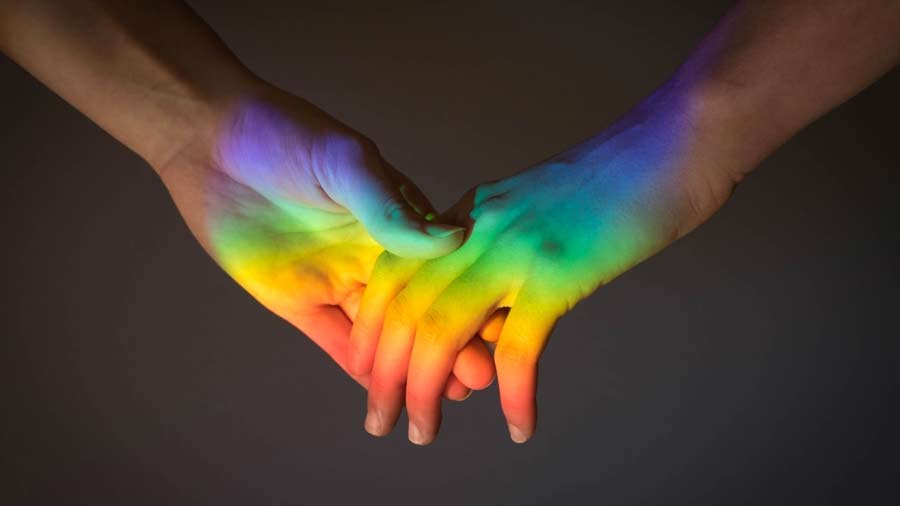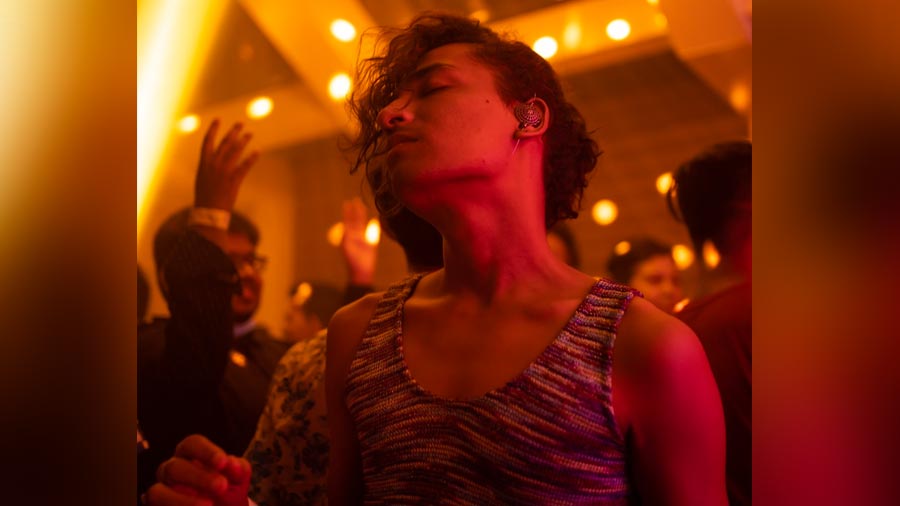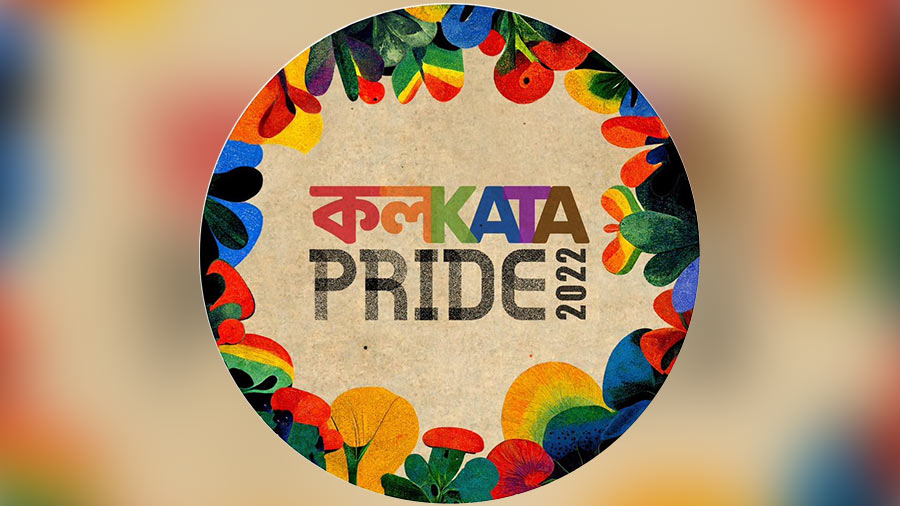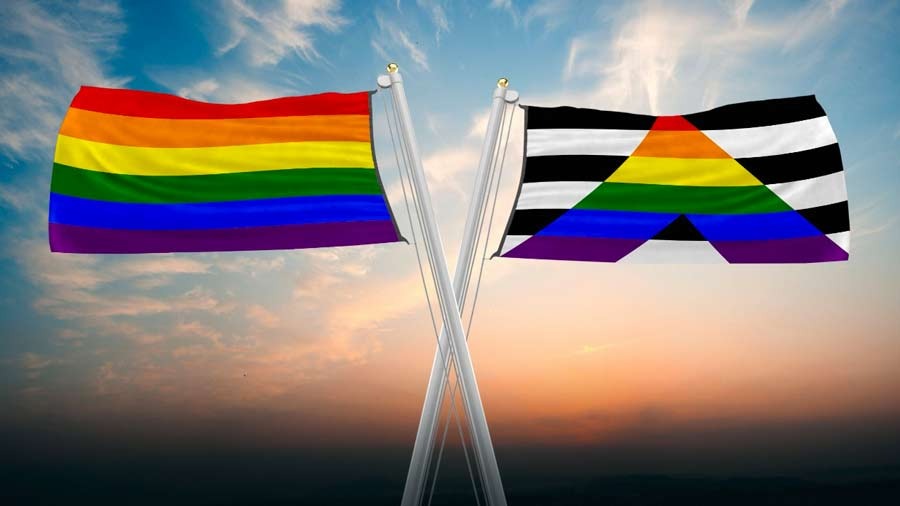“I know how you feel.” The statement is frequently used to make someone feel better when they are hurting. But how do you comprehend the hurt when the cause of it is someone’s identity?
For dancer and choreographer Lona Saha Bhattacharjee and social worker Raj Kumar Das, both also Lok Adalat judges, their identity has been used against them since birth. They identify as trans women, and for both of them, life has been anything but a smooth ride.
The challenges and suffering of members of the trans community are something that larger society remains oblivious to. My Kolkata spoke to Lona and Raj about the challenges of identifying beyond the binary, and more…
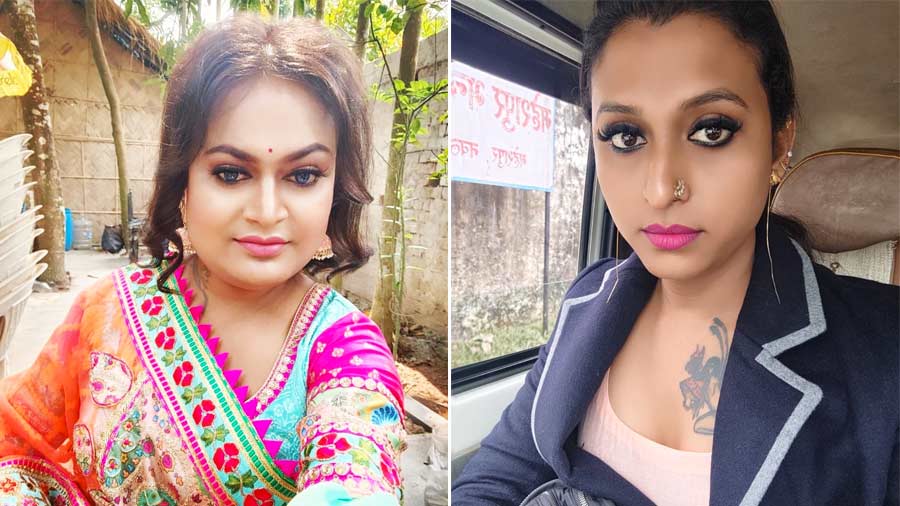
For (left) Lona Saha Bhattacharjee and (right) Raj Kumar Das, challenges began early in life with society not accepting their trans identity Courtesy Lona Saha Bhattacharjee and Raj Kumar Das
Search for acceptance
Lona Saha Bhattacharjee, a professional dancer and choreographer, says most of the resistance comes from women. “Cis women often have a problem with us. They keep focusing on how we used to be men and then changed into women. There is a common conception that if we aren’t biologically female when we come out of our mothers' wombs, we aren’t women. They keep saying, ‘Woh toh ladka tha’. Magar hai toh nahi!” she rues.
Raj Kumar Das, who works with Durbar Mahila Samanwaya Committee, a collective working for the rights of sex workers, also finds herself haunted by the past. “Twenty years ago, we had no space to talk and no one even listened. If I start speaking about the atrocities we have gone through, I won’t be able to stop.”
Tough beginnings
Lona started facing conflict from childhood. “In my heart, I never completely felt like a man. I had a woman’s desires, needs and emotions, and felt caged by my male body. When I realised that I loved a man, a lot of my ways to show affection were also feminine.” Her struggles came from an intersectionality of identities. She grew up as a sex worker’s male child, behaved in ways that society deems ‘feminine’, before identifying as a transwoman. “The first challenge was convincing my family. After that came the task of convincing my local community, and then the judgement from society. There are so many layers to it that peel off as you go through life.”
What was life like before her transition? “It is not a transition. It’s a transformation,” Lona is quick to point out. She painfully recounts several incidents during her growing years. “My own brother beat me up and locked me in the house for three days because people were objecting to ‘Lokenath’ talking like a woman, and applying kajal and mehendi. I was called all kinds of slurs and people would ask me to show them what was inside my pants.”
Raj had an equally tumultuous journey. “No one used to speak to me when I was studying in university and it was very hurtful to be shunned like that. Even now, most transgender persons are dropouts from school and college because society doesn’t accept us. This is a major reason why we don’t get conventional jobs, because most of us aren’t educated. Even if someone wants to resume their education now, there is a crippling fear of being ostracised and its resultant trauma.”
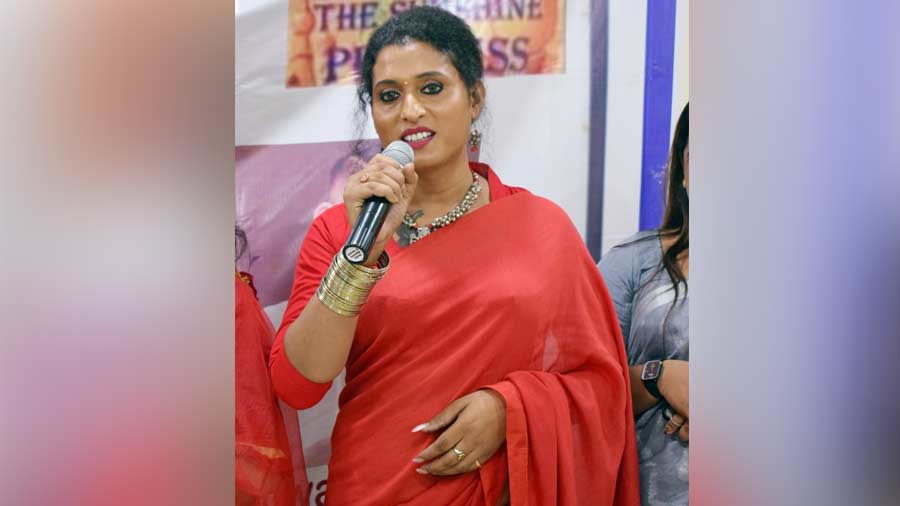
It is difficult for trans people to find acceptance in educational institutions, says Raj Courtesy Raj Kumar Das
This discrimination goes beyond classrooms, to every single public (and often private) space. Raj confesses that she gets stared at whenever she travels in a bus. “Hospitals don’t have wards for us, nor do police thanas have appropriate cells. We’re constantly shunted into exclusive spaces meant for men or women. India has accepted transgenders, but how will its transgenders survive? There are no clear laws about how we can study, work, marry, adopt, or even inherit parental property. Even if we get married, transgenders have to identify as ‘female’ or ‘male’ in documents, because the law doesn’t let someone identifying as ‘trans’ get married without submitting to the holy binary. From morning till night, at home or outside, among friends or colleagues, we constantly face discrimination. Our community lives in constant fear.” Raj’s rage is evident, stemming from decades of societal neglect.
The complications of love and identity
Even love has been complicated for Lona. “I have been in a relationship with a man for eight years and we live together. When I was a man, it was considered a homosexual relationship. As two gay men, the relationship was different both mentally and physically. We even searched for a place to rent all over Kolkata, but were driven away. After my transformation, my partner started seeing me as a woman, and the means of affection changed drastically. Even society is more accepting of our relationship now. It also got much easier to get a house, but the struggle isn’t completely over.”
Apart from changing her relationship, Lona’s sex-reassignment surgery transformed every other aspect of her life. “When people saw me after my transformation, they were astonished and impressed. It was the perfect answer to all those who abused me for not conforming to their norms. I also felt that my transformation could motivate others who were struggling with their identity, showing them that if I could take the step, they could too.”
However, the process also brought with it a new, more harrowing realisation. “As a man who swung his hands and waist, I was often called a hijra. People never even realised that hijra is a profession, one that I didn’t practise at the time but do now. I had people throw water at me and try to slap my bottom. The moment I transformed myself, they started finding me desirable, with some remarking that they’d like to elope with me. I realised that in our society, it is okay for a biological man to get a surgery and identify as trans, but before the surgery the same man cannot explore his feminine side.”
The role of gender roles and education
Lona adds that gender roles become suffocating frameworks from childhood itself, establishing what men and women can do, without accommodating anyone outside the binary.
“Biology textbooks in school are like checklists for boys and girls, reinforced by parents. Men are supposed to have short hair, beards and a heavy voice, while women should have long hair, apply make-up and have large breasts. But why should society have a say? I also come from society, but no one will come to clothe or feed me if I stop earning tomorrow. So why should anyone decide how I dress or talk?” In order to break this strict structure, Lona feels that it is imperative to include studies on queer rights, spectrums and experiences in higher education.
Raj reinforces this, emphasising how most problems come from a lack of awareness. “People don’t realise this, but a trans woman doesn’t have to dress like a woman or get surgery. The trans identity comes from within, when you internally don’t conform with the body you are born into. Even without surgery, if I change my gender mentally, I can still identify as trans.”
She adds that token representation doesn’t help, with most reforms reeking of a saviour complex. “We thankfully have a bit of visibility now, but barely any rights. The name given to us is ‘third gender’, where men come first and women second. This is something we refuse to accept, because why should we come after men and women? I get to decide whether I’m called a woman or trans woman, not society. You can’t assume my gender without me telling you.”
Lona has been working tirelessly for 25 years to be known as she is today, but assumptions from her past refuse to leave her. “Even today, some people still call me by the name I had as a man. They don’t realise, that is who I was, but not who I am. When I introspect over my years of struggle, it sometimes feels like all the fights have been for nothing if someone doesn’t even call me Lona. I fought so much with myself to go from Lokenath to Lona, but wherever Lona goes, Lokenath follows. It feels like I keep going in circles.”
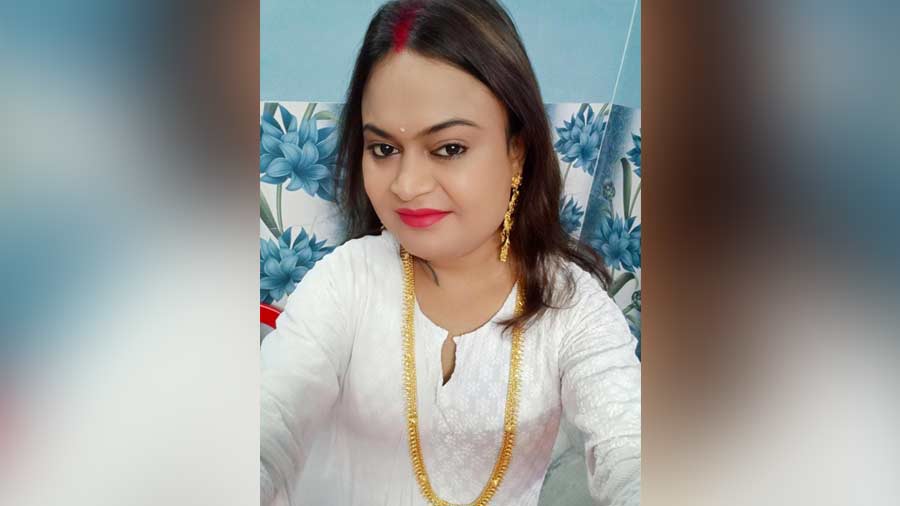
For Lona, the identity of her past still follows her with people often referring to her by her dead name Courtesy Lona Saha Bhattacharjee
A tumultuous journey
Their respective journeys have led to both of them being financially independent, a badge they wear with pride. But it doesn’t always make life smooth. “I have to constantly prove myself at every point. Not only do I need to ensure that I can support myself financially and emotionally, but also that my orientation will not harm my family,” Raj says. Coming from limited means, Lona reveals that she had no financial support from her family, who still depend on her. “I underwent my transformation for me, because it awakened my self-confidence. I saved up Rs 1,25,000 for my surgery. No one funded me.”
With both Lona and Raj being Lok Adalat judges, they have a certain sway in the community and can effectively support themselves. Raj was already working in the social sector for 15 years, campaigning for transgender rights at the time of the NALSA judgement (which led to the recognition of transgenders as the ‘third gender’ by the Supreme Court in 2014). “I interacted with the District Legal Services Authority a lot after the NALSA judgement and they invited me to join as a judge at the district level. In September 2016, I became the first transgender judge of a Lok Adalat in India,” adds Raj. Since then, Raj has passed judgement in over 100 cases and settled disputes at the district level.
“Initially, even sitting in the chair was a big deal, as people would notice me and look away, refusing to acknowledge me and doubting my ability. Gradually, I earned respect and today my words hold value and my opinion holds weight. While there is a cap in terms of the things I do, I try to work for the community to the best of my ability, even if it is helping with simple things like changing names or obtaining a pro-bono affidavit.”
But the struggle is far from over. “Thankfully, some people like us have managed to build a name with our work and our orientation is being recognised. But the fight is hardest at the grassroot level. Even now, the fight continues every day, every minute, and every second,” Lona concludes.
